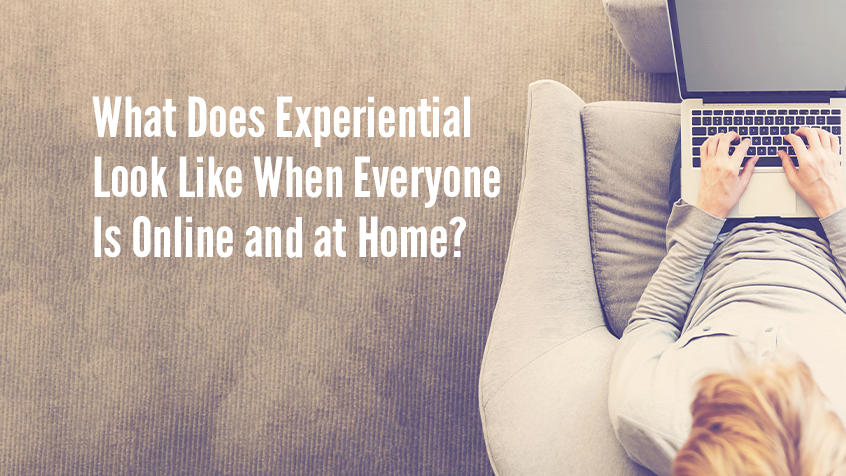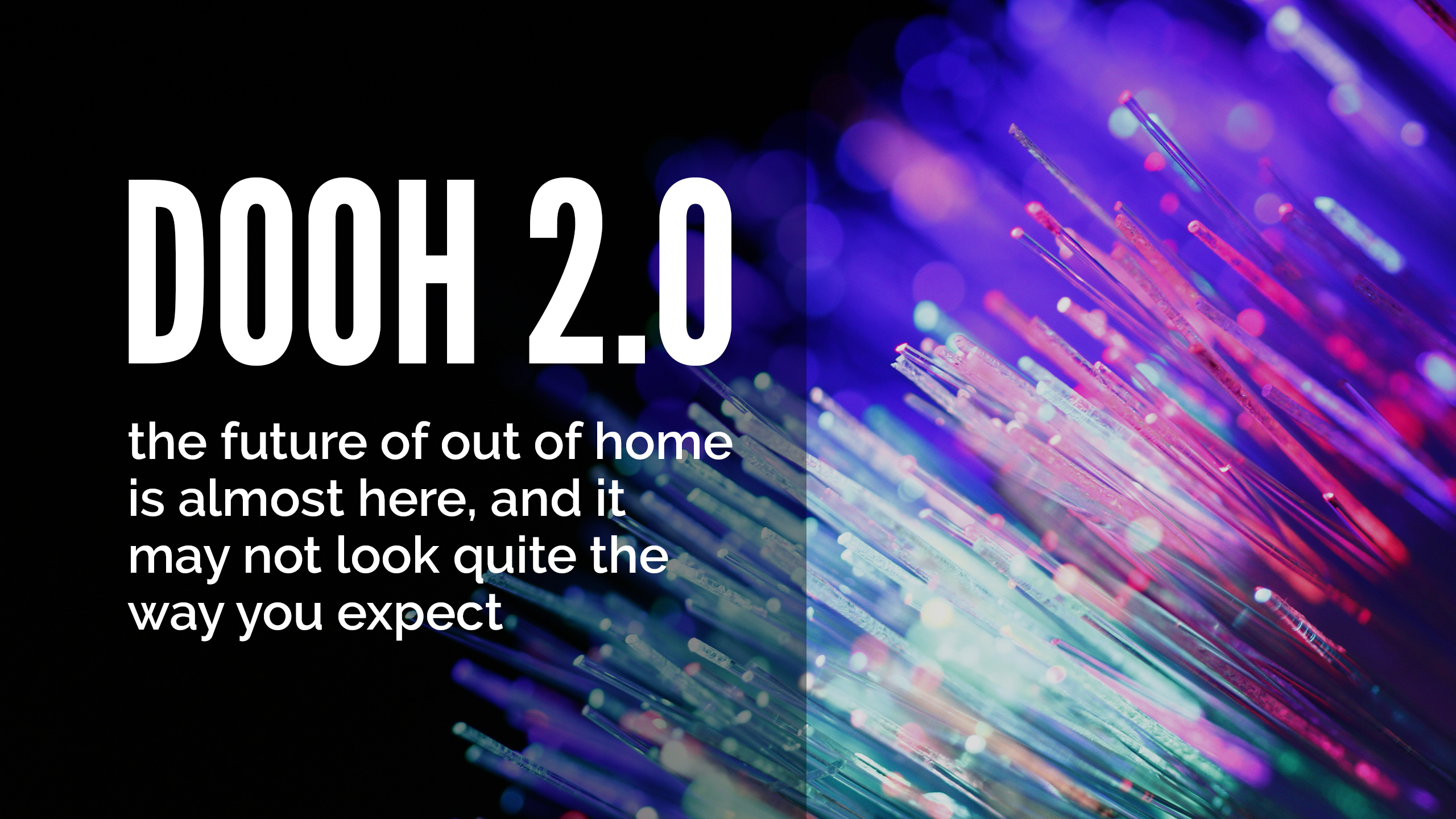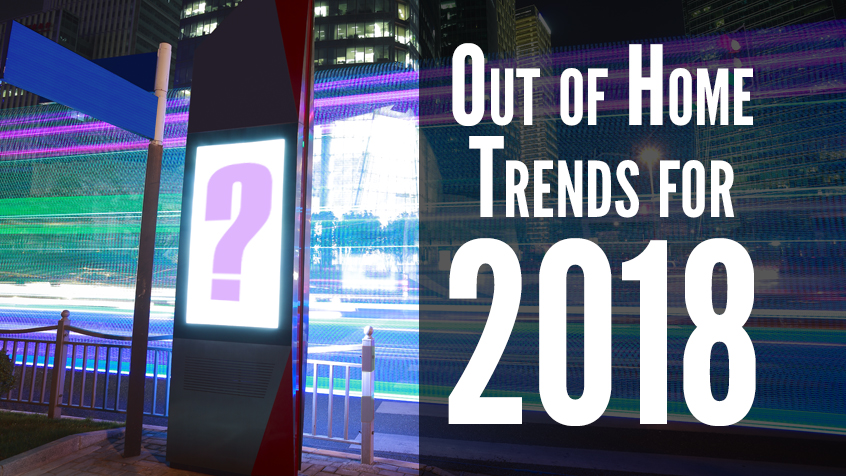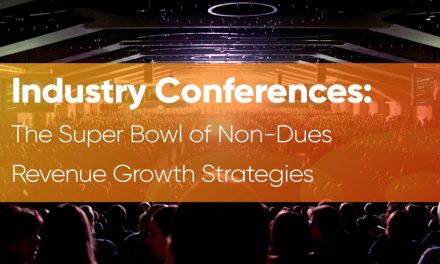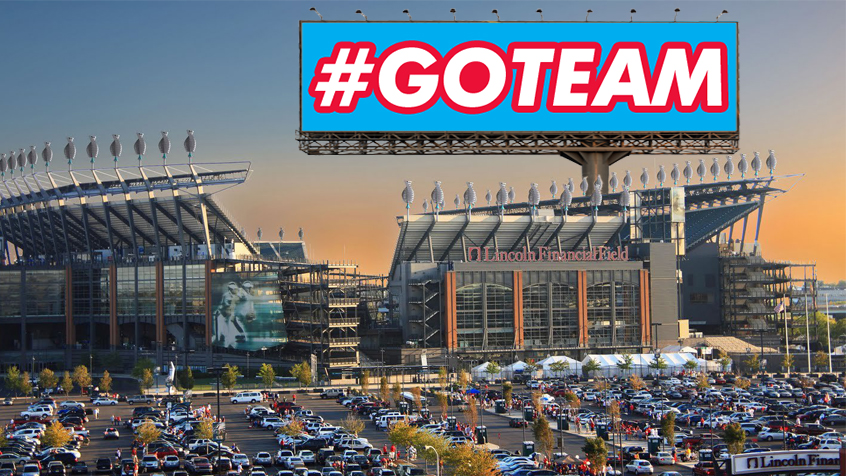As experiential marketers, we are used to creating contingency plans for when we need to pivot and change course from our most-desired activation game plan. These days, COVID-19 forces us into the ultimate contingency plan ask: How do we conduct our experiential when people aren’t allowed to attend an event or even interact?
With the unprecedented cancellations we’ve seen, starting with SXSW, major marketing outlets are discussing virtual events as an alternative for experiential brands to explore.
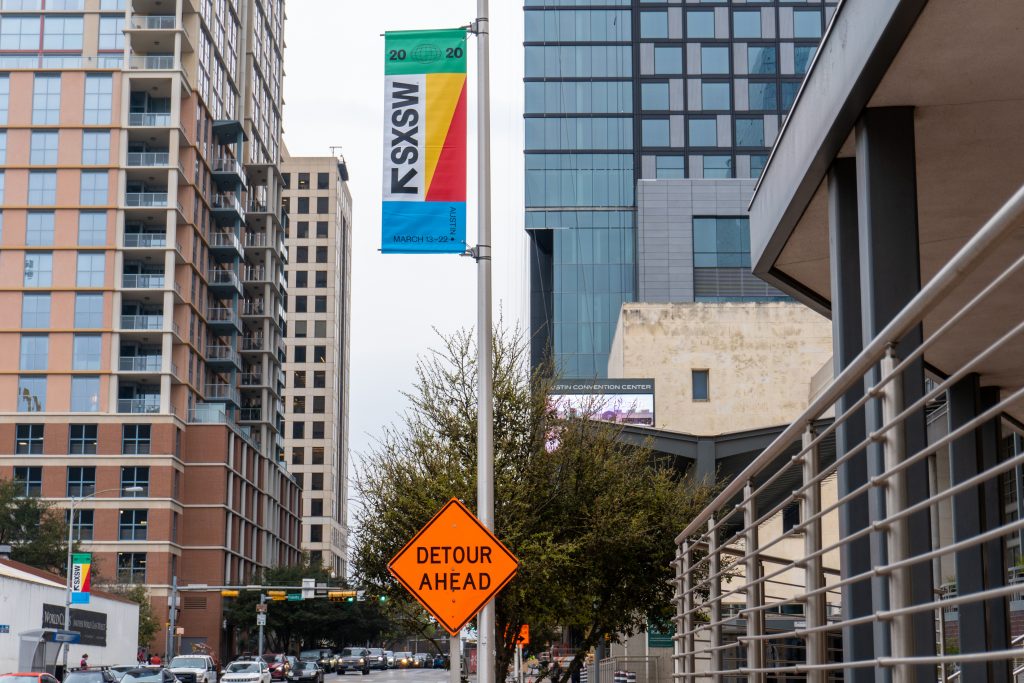
Online makes sense as a growth area for experiential.
With a quickly growing number of states on mandated stay-at-home orders, we’re coming to a collectively clear realization that there is an immediate need for experiential specialists and creators to translate these live engagement activations virtually online. Although it’s not ideal, the onus is on us to take the creativity, energy and interactivity that live experiences bring and translate them to the digital space where everyone is congregating.
So we need to ask ourselves, what could shifting experiential to online look like, does it make sense, and can digital adequately frame and broadcast experiential?
This progression, or leapfrog over an attended live engagement activation directly to online, whether live-streamed or produced as shared content, makes a lot of sense based on what we already know and try to achieve with experiential.
The groundwork for a pivot has already been laid.
As marketers, we were already encouraging the extension of experiential online, both through encouraging shared experiences on social media and other platforms, and by generating content that could be used for additional brand marketing and promotion. We know that one of the benefits of live experiential activations is the exponential growth that can happen online, on social media and through paid media amplification.
One live experience we produced in Chicago’s crowded Millennium Park saw an estimated 16,000 single-day in-person impressions, which grew to over 130 million impressions with the further amplification effect via social and earned media.
Sure, as live activators we do not like to deny attendees the value of a live 1-to-1 engagement, which is at the core of experiential marketing. That said, since we are in a time where necessity-is-the-mother-of all-invention, with public space shutdowns and extreme limits on crowd gathering sizes, we must adapt. As we know, typically Americans spend about 70% of their day outside of their home, but now this has shifted back to time spent in the home except for the occasional venturing out for supplies. This is a huge shift and marketers must, if only temporarily, take our creative ideas and activations to where people are— online.
Experiential and online are connected in other ways.
Since one of the primary uses of experiential is to create content for digital—social sharing, web content, etc.— we already have a baseline for how effective this new scenario can be. After all, studies show that 98% of people who attend a well-executed live event generate digital content. They want to capture that memory and share it with their friends and family, becoming ambassadors for the brand.
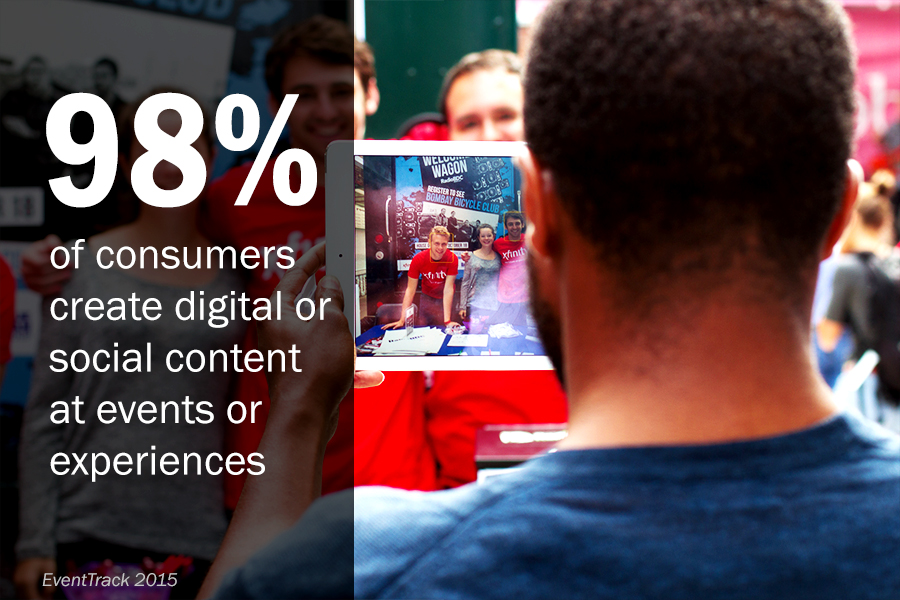
Leapfrogging the actual live experience with creative digital content should still provide a valuable and shareable experience for participants. Can you see more bridges like this that can be built?
Find your space online.
The technology offerings that translate experiential to online are plentiful. You can tap into existing online platforms and live broadcast solutions like Facebook Live, Instagram Live and YouTube Live. AR and personal VR also offer a plethora of possibilities.
In addition, the translation of live activations to video content, online streaming or post-small-event content will likely extend our logistical considerations to creating and building through more of a videographer’s and producer’s filter. Experiential storytelling and timeline are in-play more than ever in this new online experiential world. Many experiential footprints work well as free-form areas to explore and get lost in, but the online world is typically more timeline-oriented and structured. However, perhaps there are deeper technological offerings that can reflect the immersion effect of large live footprint experiences.
During a time of national crisis, content themes are important to consider. It becomes more important than ever that your brand create an authentic experience that makes connection or feeling online. During these challenging times, your brand will want to revisit approaches that have worked in the past and retool them for your audience now found online.
What are we seeing in the market?
One area that experiential can learn from is the live music performance sector. From touring artists to everyday working musicians performing at clubs or teaching in classrooms, all are now adapting and sharing video performances on Instagram, Facebook and other channels. On Instagram, DJ D-Nice has been streaming live since Monday playing feel-good tunes to help keep spirits up. Is anyone listening? Tune in, the comments and hearts streaming are non-stop.
Can you think of a shared communal space that is more engaging and interactive than your fitness gym? One example of live spaces transitioning to virtual is Planet Fitness’ closing of their physical locations coupled with their offering of live-streamed workout classes to participate from home. In addition, their nod to the goodwill to all needed during this time is to offer this to everyone, including non-members.
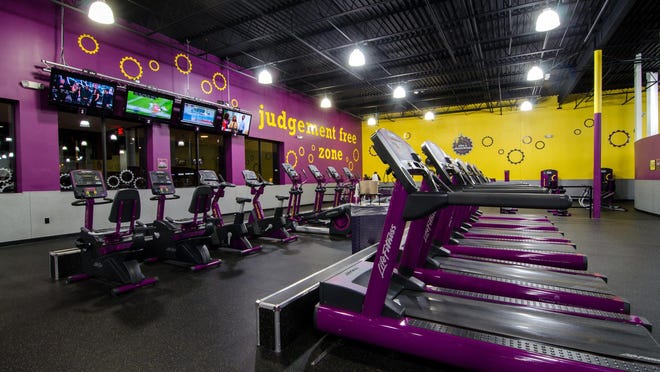
And if there is any question about whether any of this can be more customized, audacious and fun, check out what Amazon Studios once did with the gaming platform channel Twitch. To promote The Grand Tour Season 2, they created an amazing live and interactive global audience channel that allowed virtual gamers to play the classic game Battleship modified for cars (Battle Cars) where the online audience interactions blew up real cars on a remote set in California.
Let’s do what we do best: ideate and create.
If you work in the experiential space, then you love to ideate. By nature, you are a creative experiential thinker. So, now it’s time to innovate for our industry.
Scamper is one useful technique for ideating or taking a different approach to a problem, product or, in this case, experience. Scamper offers alternative thinking by getting the user to think differently about the challenge through seven scenarios: Substitute, Combine, Adjust, Modify, Put to other use, Eliminate, and Reverse. Each scenario can help you change your thinking about your experience or event and reveal new opportunities to make it successful given the current restrictions on live gatherings.
Until we meet (live) again…
Until we can reclaim our communal public spaces, let’s collaborate as an event industry. There are so many details to ideate through and strategize over with our multiple areas of expertise. What other industries can assist? Are there areas of expertise we can learn that will expand our ability to pivot? Let’s keep this conversation front and center as we help to evolve the experiential space we know and love so well with a contingency plan online that we create together.
Contact Us to learn more.

